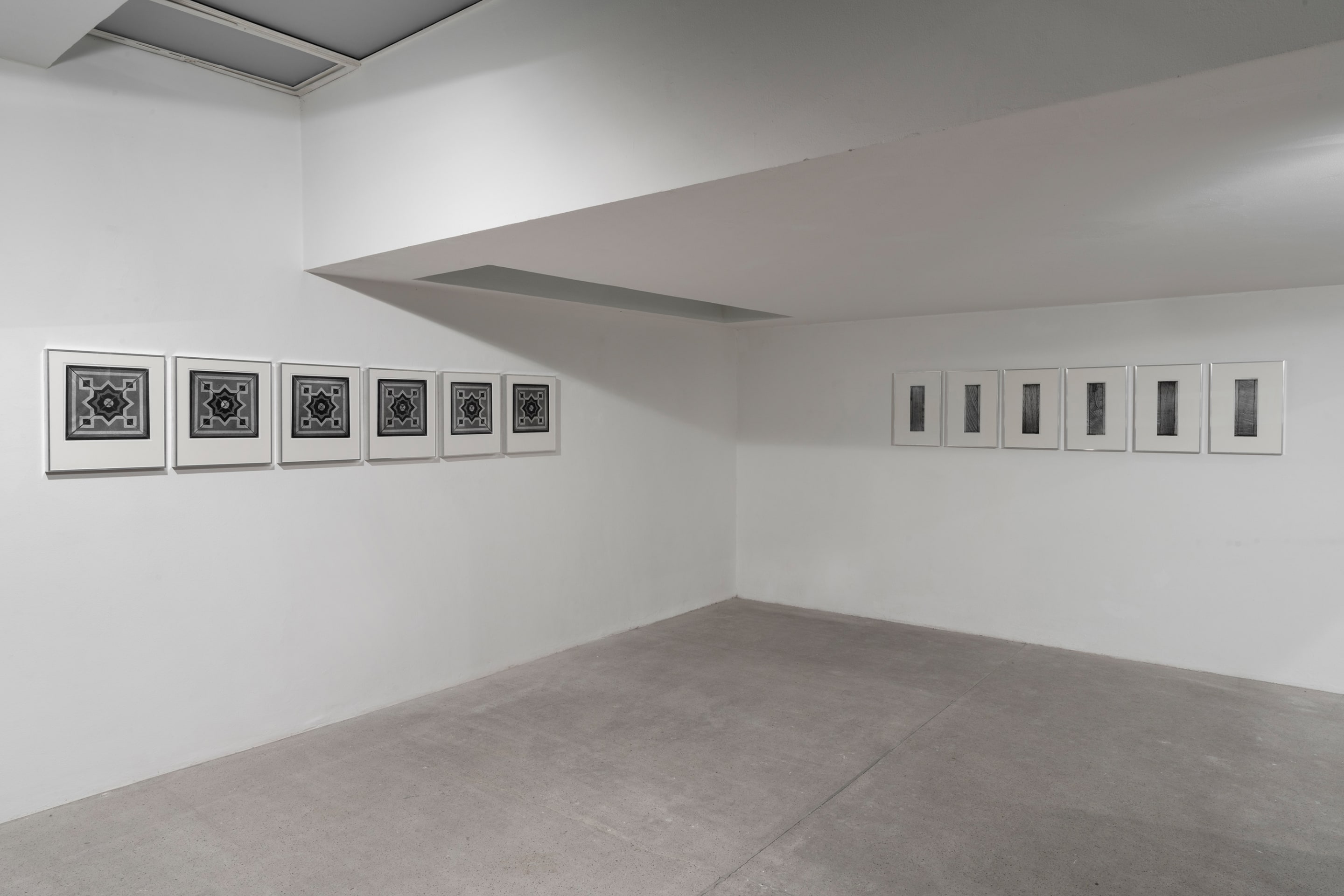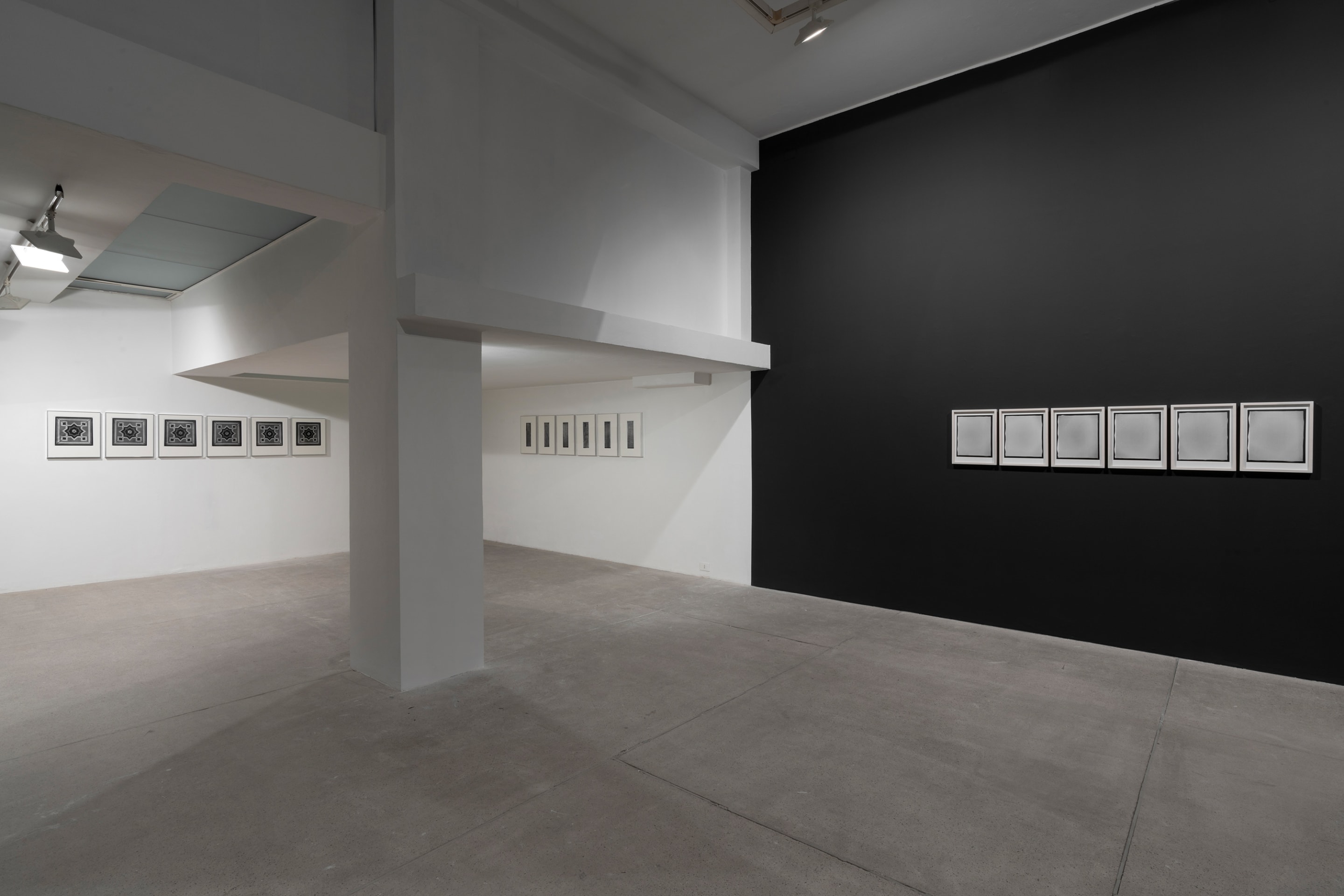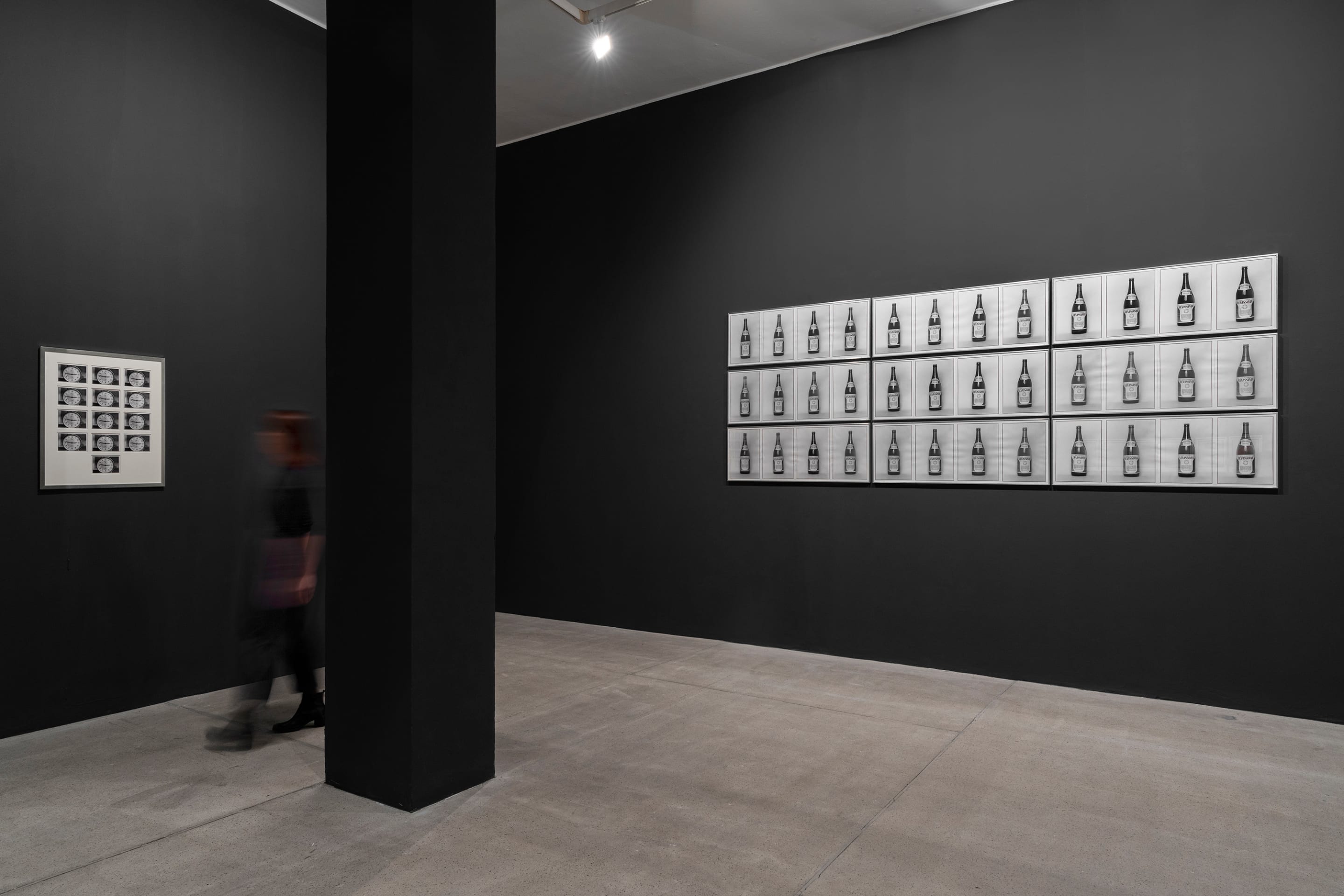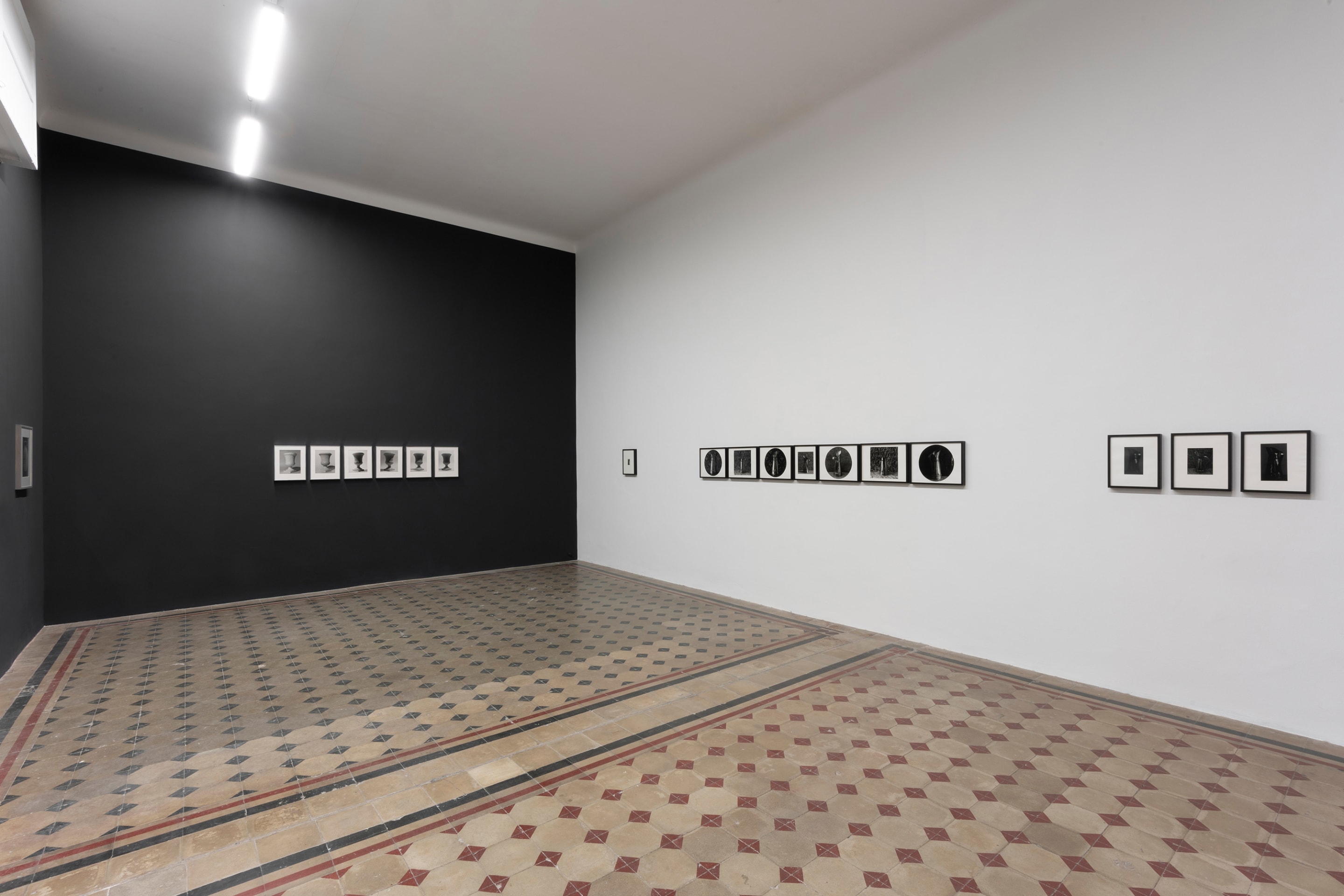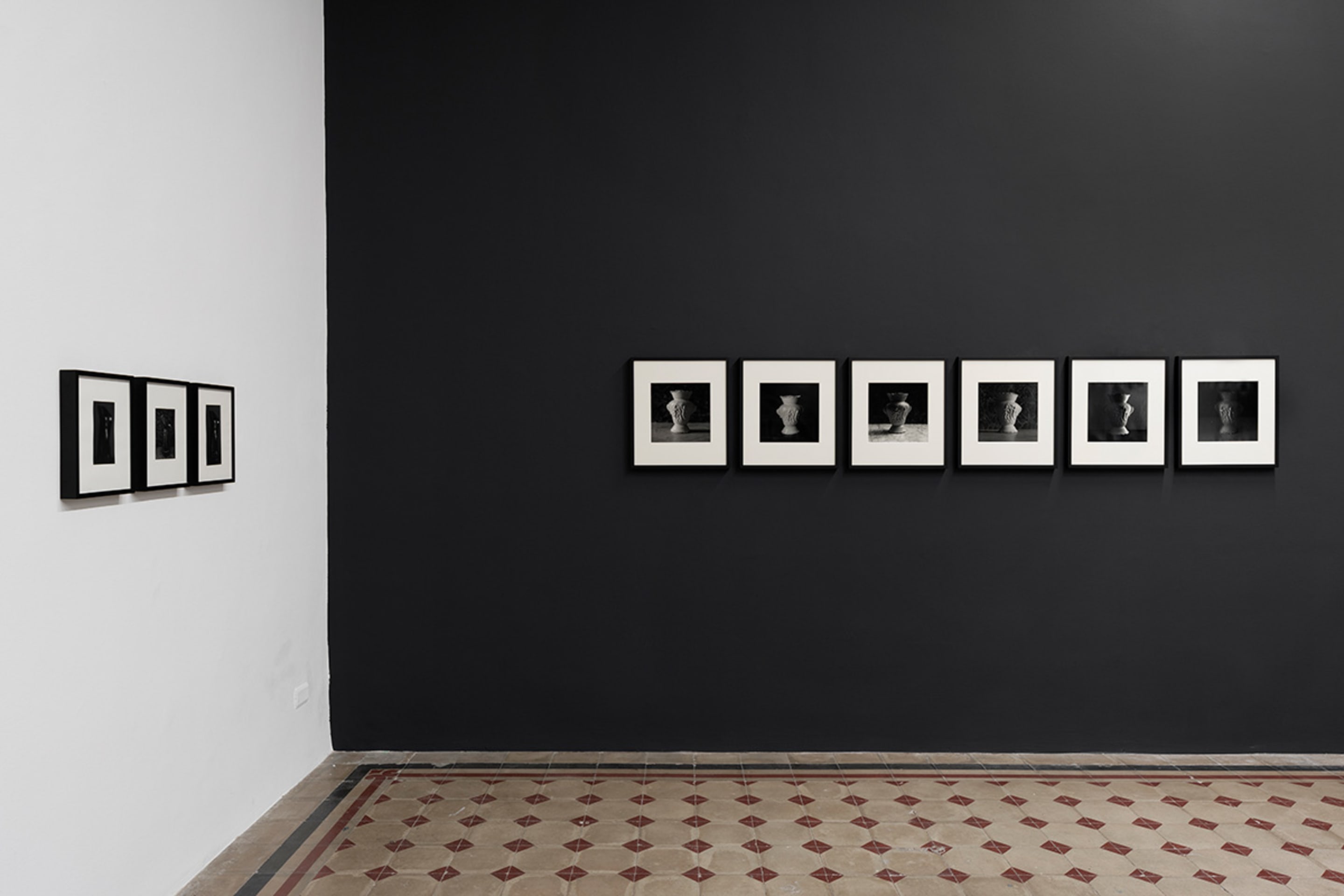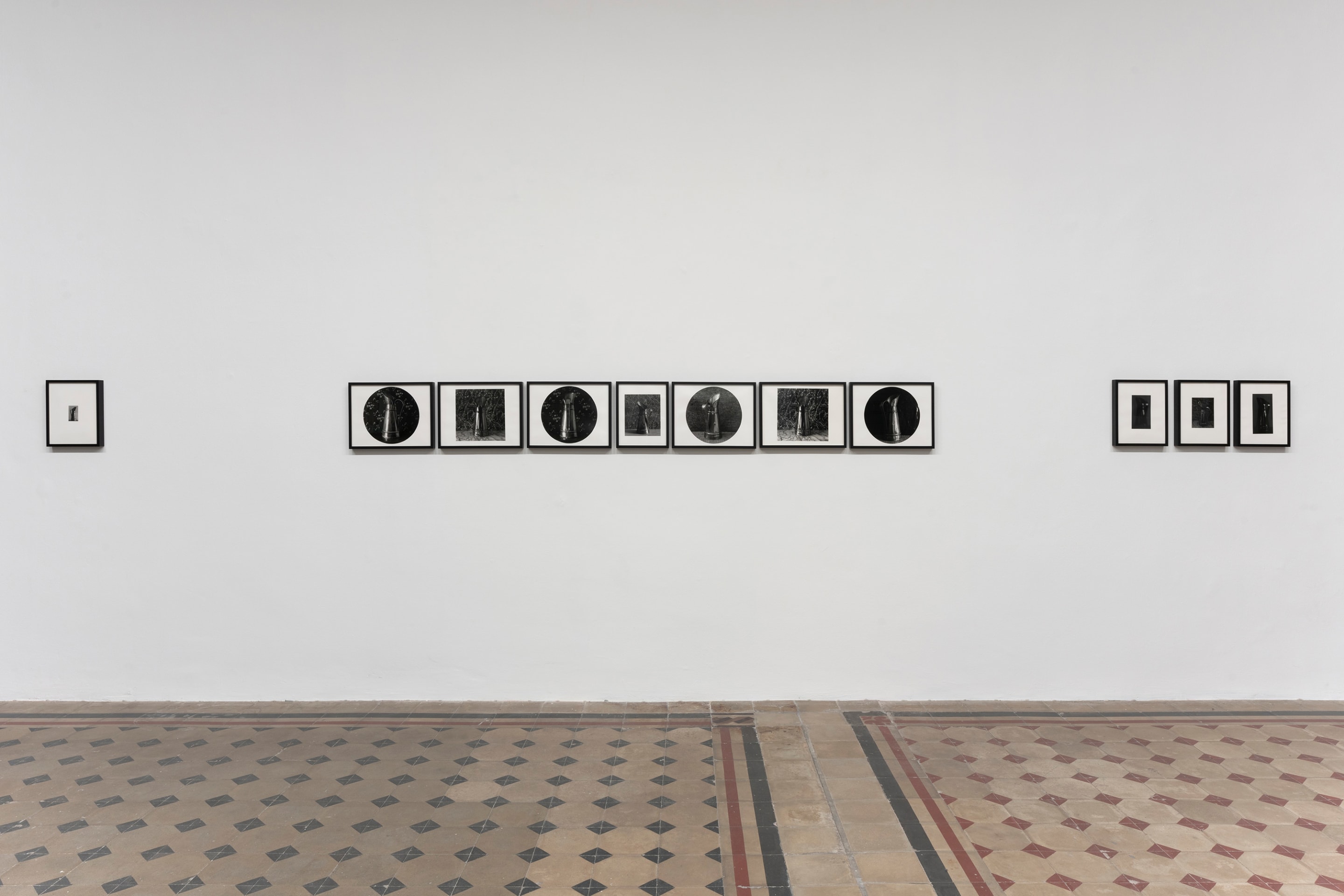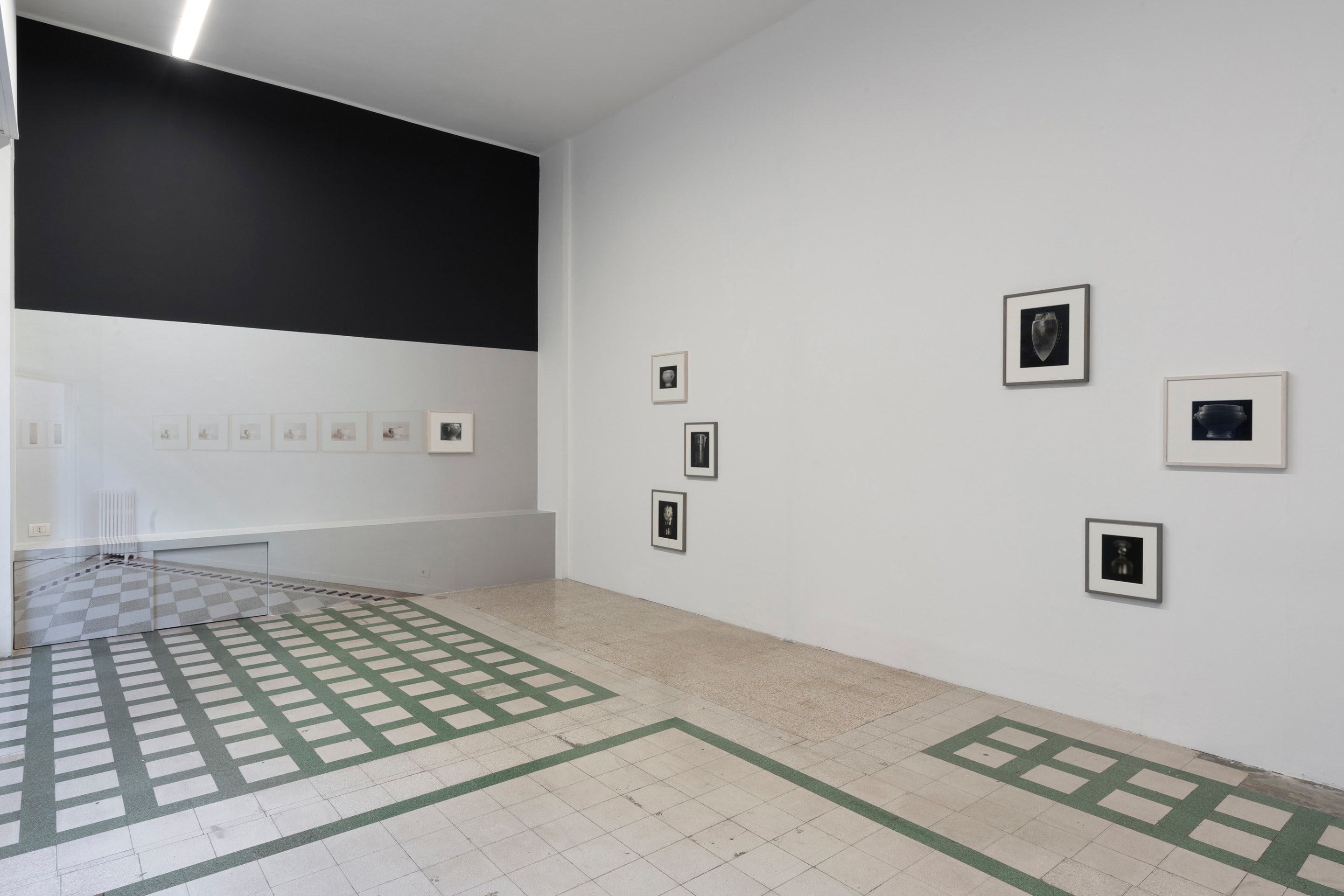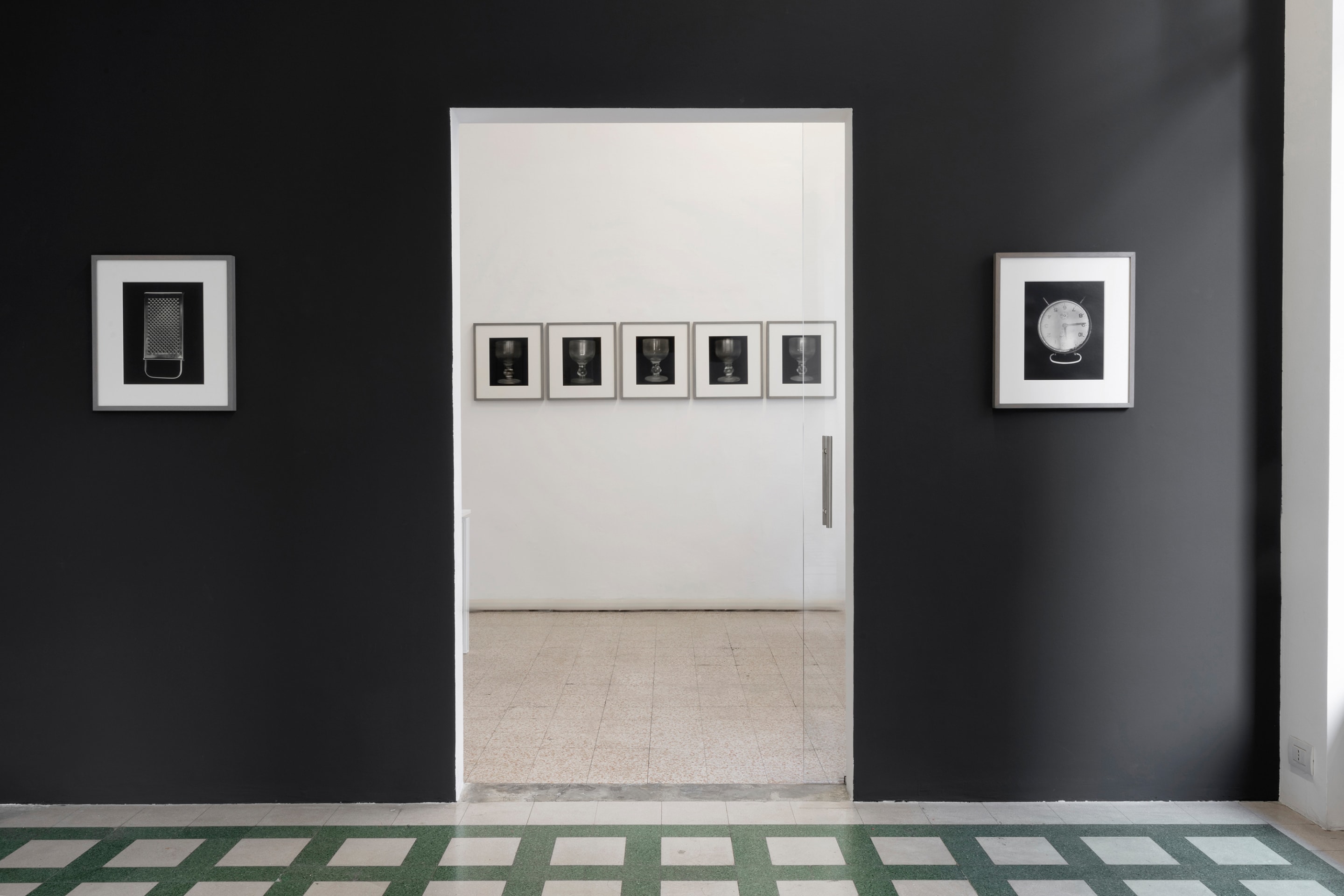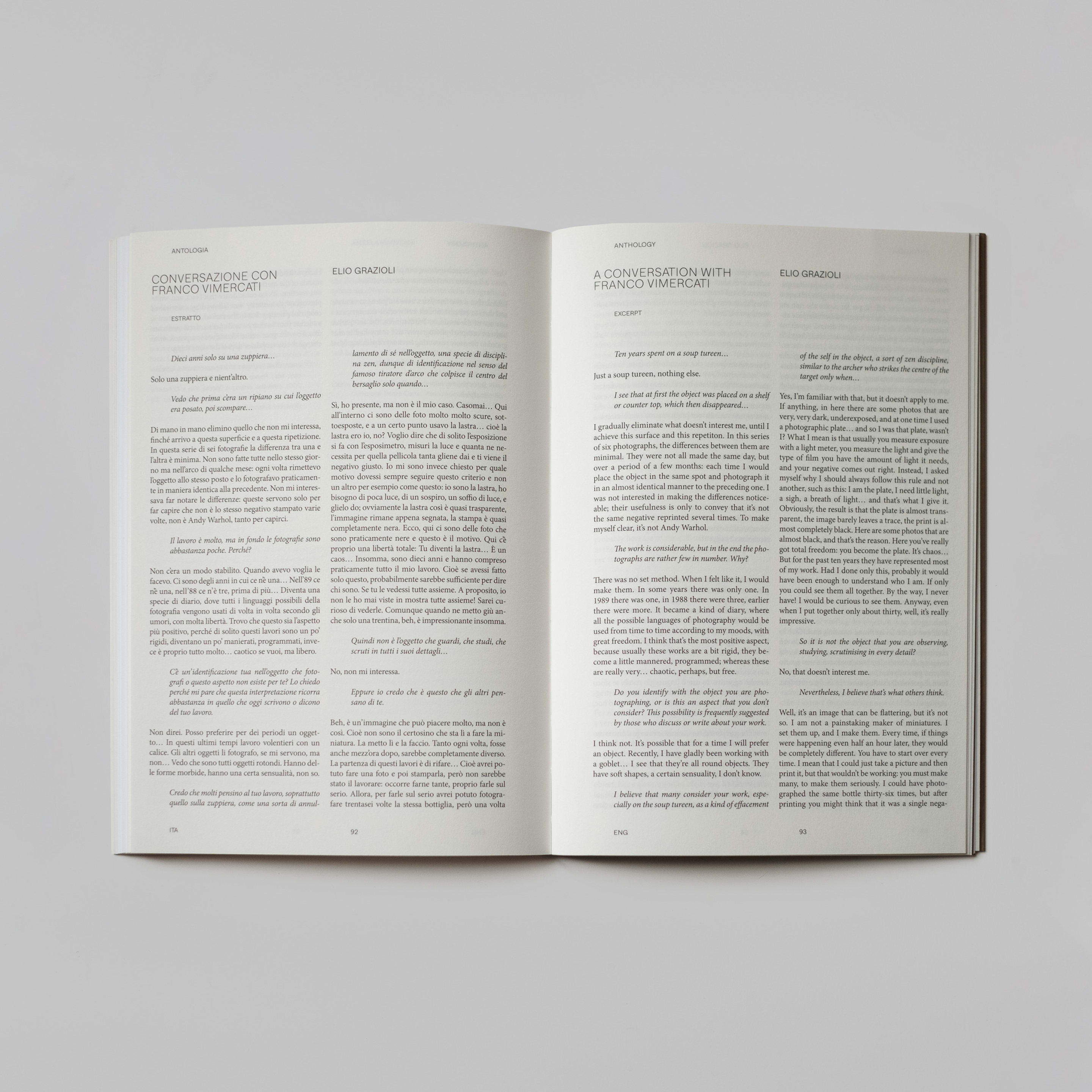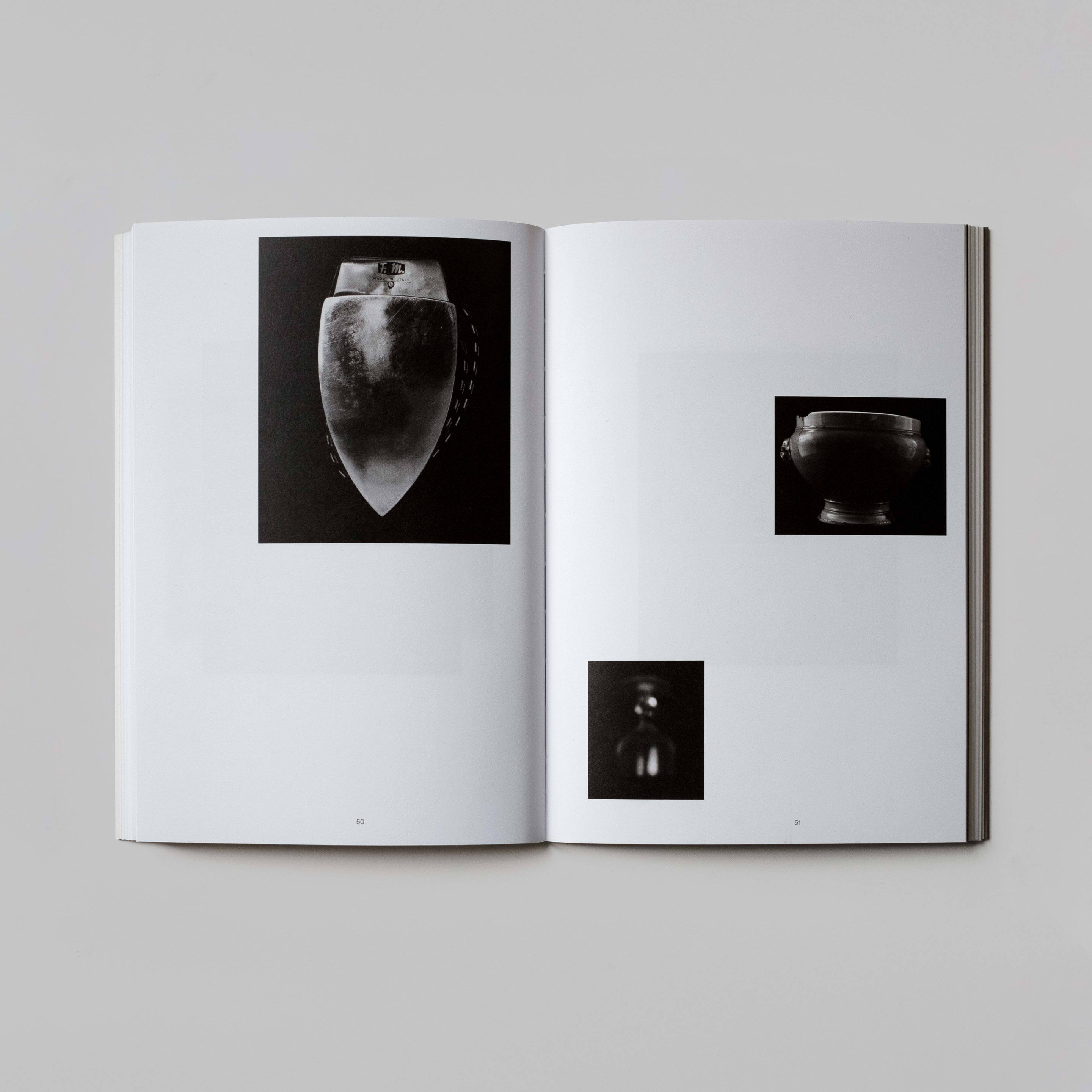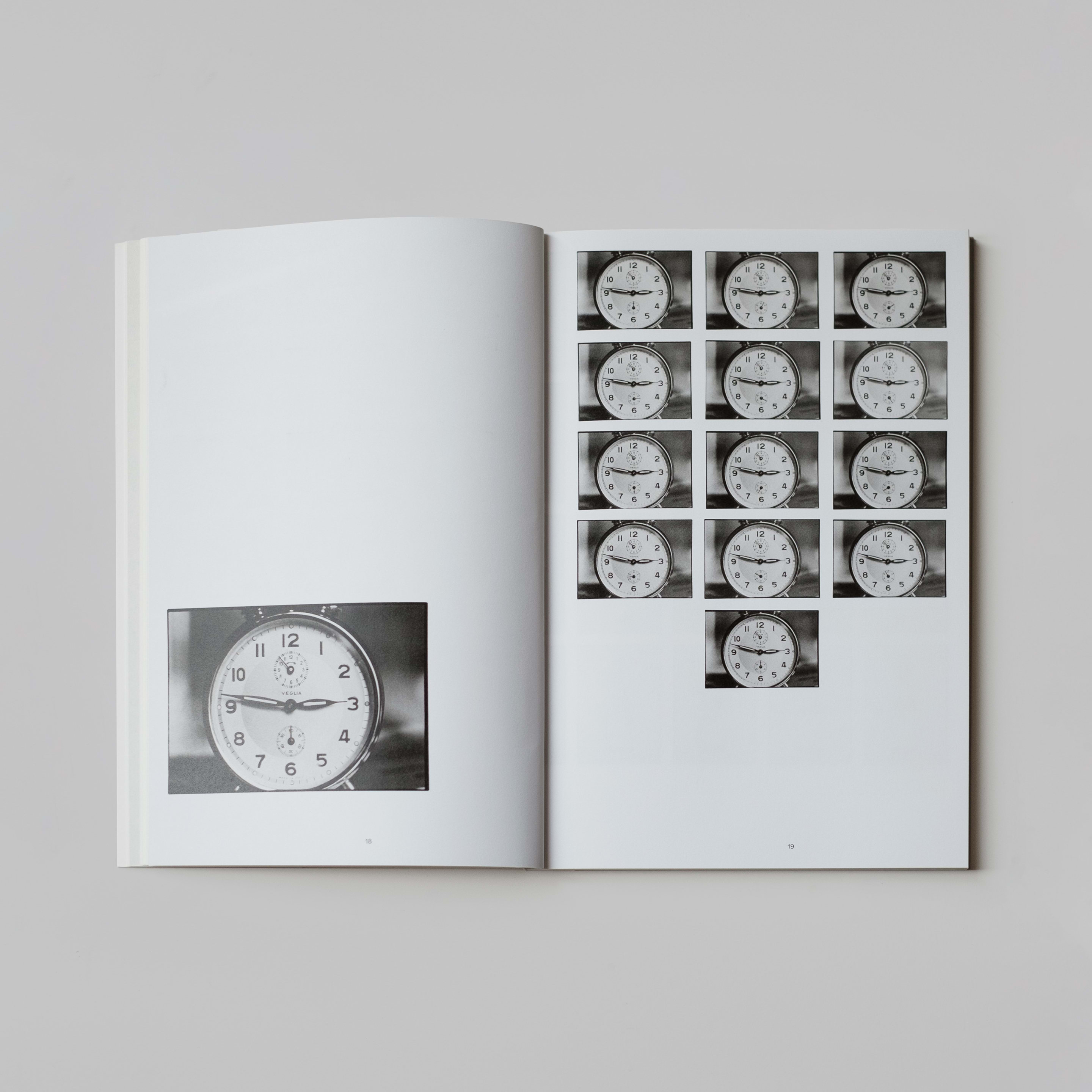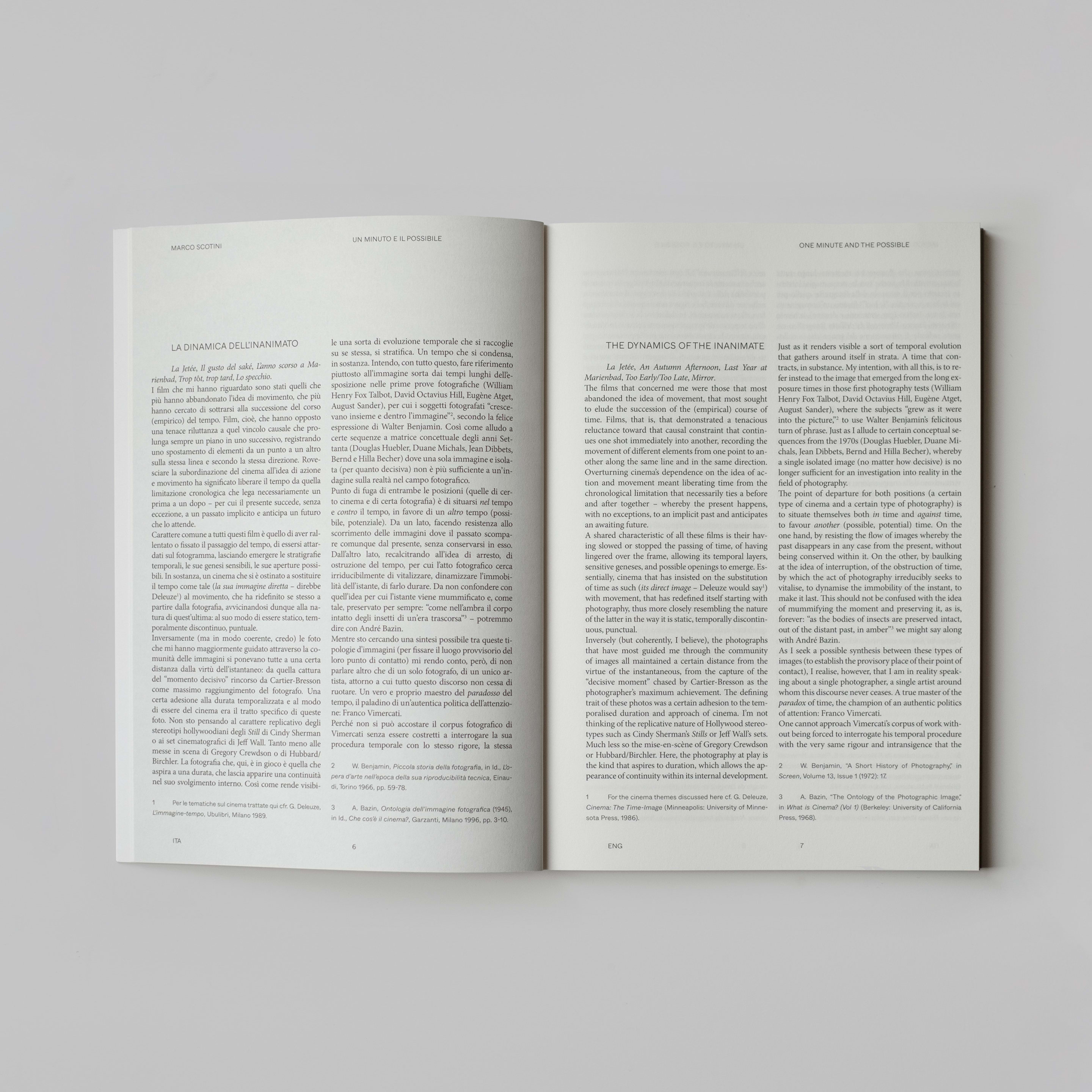Exhibition expanded: Un minuto di fotografia
On the occasion of Un minuto, our current exhibition of works by Franco Vimercati, we are pleased to present Un minuto di fotografia, an online viewing room which places the artist’s photographic practice into further focus. The retrospective, curated by Marco Scotini, is devoted to the artist with whom the gallery first opened in 1995 and unfolds across the gallery’s three exhibition venues in via Stradella, Milan, each dedicated to a decade of Vimercati’s activity, from the 1970s to the year 2000. The online presentation Un minuto di fotografia coincides with the release of the book of the same title, published by Quodlibet, and includes a selection of artworks and excerpts from the texts gathered in the publication as well as video documentation of the exhibition at the gallery.
Remaining devoted, without once straying, to the austerity and intractable asceticism of the 1970s, Vimercati continued to develop – for thirty years – the model of photographic series and sequences, shunning the status of the single image as autonomous and self-sufficient, separate from that infinity of relationships that make each moment a composite of multiple layers, stratified and concatenated into barely different folds, producers of meaning. Vimercati obstinately concentrated on time by reducing the superfluous: no colour beyond black and white, no interesting subjects, no virtuous composition, no different camera lens, nothing anecdotal. And still: no psychologism, no representation, nothing but canonical framing, no exercise in style. Essentially: “until there was nothing left except the shot.”
Marco Scotini, One Minute and the Possible. Franco Vimercati and The Photographic Time. Published in Franco Vimercati. Un minuto di fotografia (Macerata: Quodlibet, 2020).
Do you use photography for investigation or as research? For me it is of fundamental importance that the final object of my work be discreet, not unwieldy, light and fragile, like a sheet of paper that has been touched by light. That would be enough. Then, it’s the only way to render my inclinations tangible for observation and analysis – which lead to replication, to comparison – and in the end to an essential component that I find very stimulating: the shooting, developing the film, the printing, the paper itself.
Angela Madesani, A Conversation with Franco Vimercati. Milan, 1998. Published in G. Panza di Biumo, A. Madesani, eds., Franco Vimercati. Fotografie dal 1973 al 2001, exhibition catalogue (Varese, Villa e Collezione Panza-Como, Associazione culturale Borgovico 33) (Rovereto: Edizioni Stella, 2008). Now in M. Scotini, Op. cit.
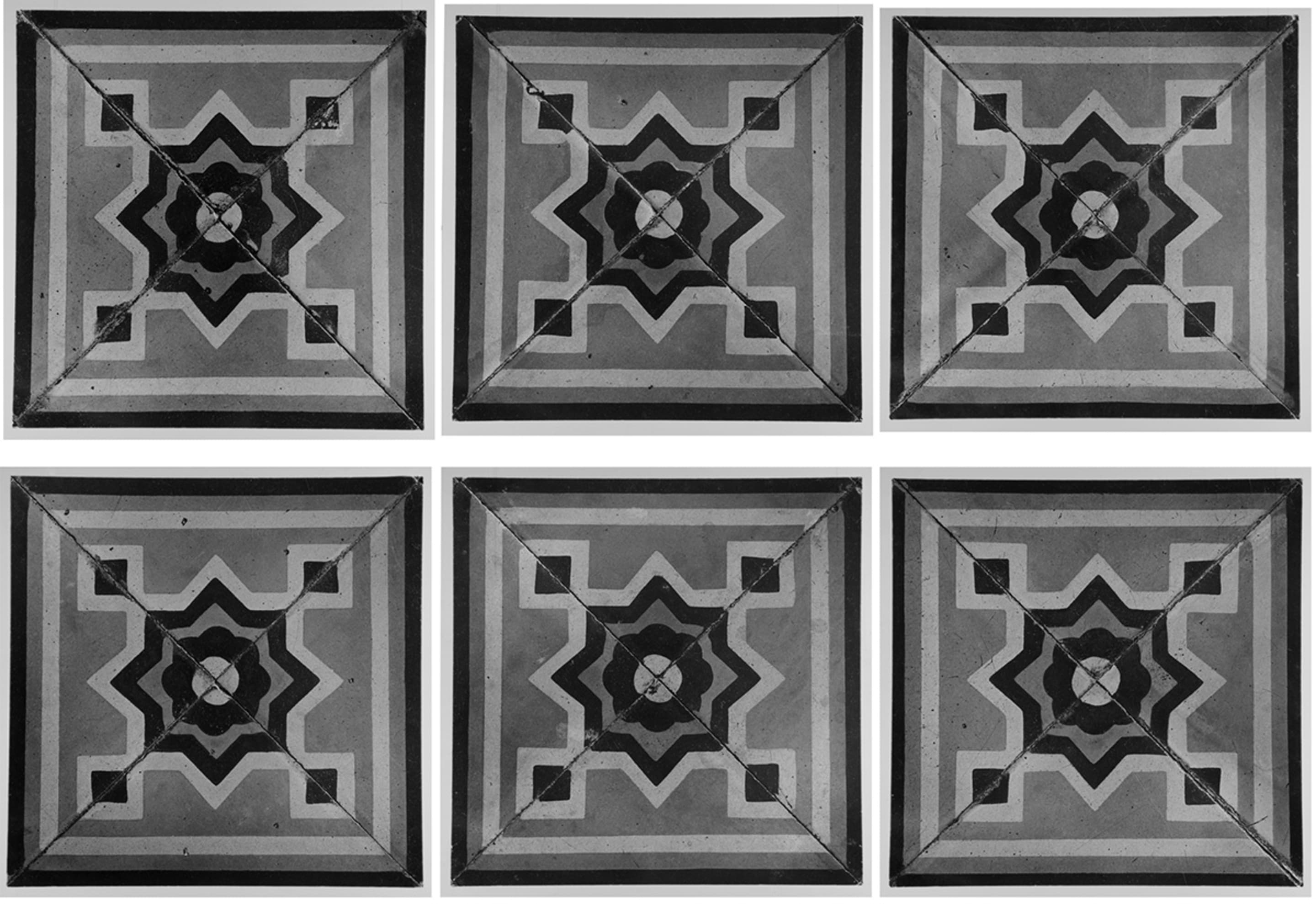
Series of 6 photographs, gelatin silver prints
27,5 × 27,5 cm; 44,5 × 38,5 × 4 cm framed each
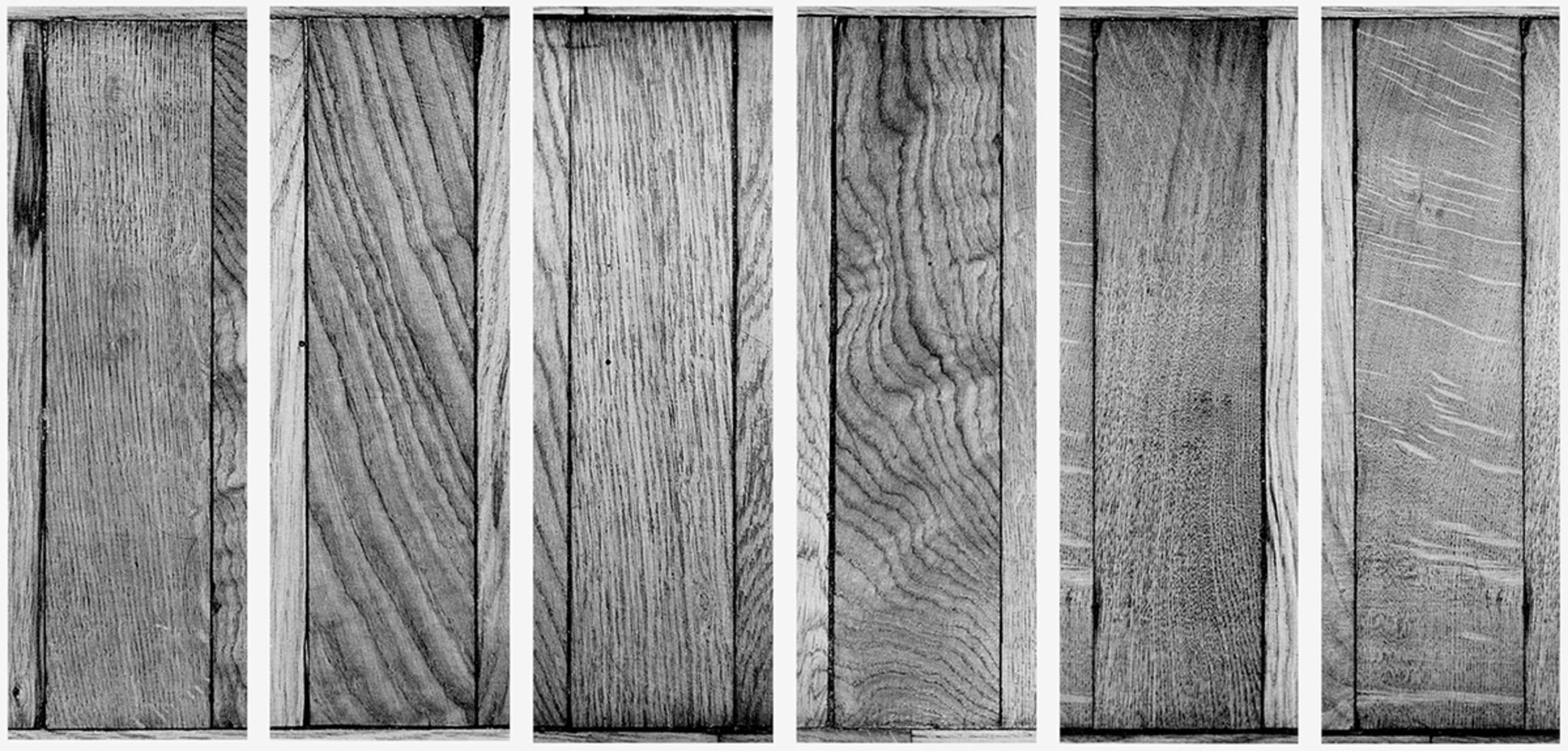
Series of 6 photographs, gelatin silver prints
31 × 10 cm; 49,4 × 32,5 × 4 cm framed each
It is difficult to find any other work to rival the singularity of this project, which was developed slowly, silently, and in solitude in a time marked by the growing proliferation of images and the tumult provoked by the birth of the internet. It is, therefore, quite safe to say that any history of pre-digital photography will find its most convincing epilogue in this Milanese artist.
Javier Hontoria, Dense Time. Franco Vimercati, published in E. Grazioli, Archivio Franco Vimercati, eds., Franco Vimercati: la fotografia, la vita. Un dialogo con Giorgio Morandi / Franco Vimercati: la fotografía, la vida. Un diálogo con Giorgio Morandi, exhibition catalogue (Madrid, Istituto Italiano di Cultura, 2019). Now in M. Scotini, Op. cit.
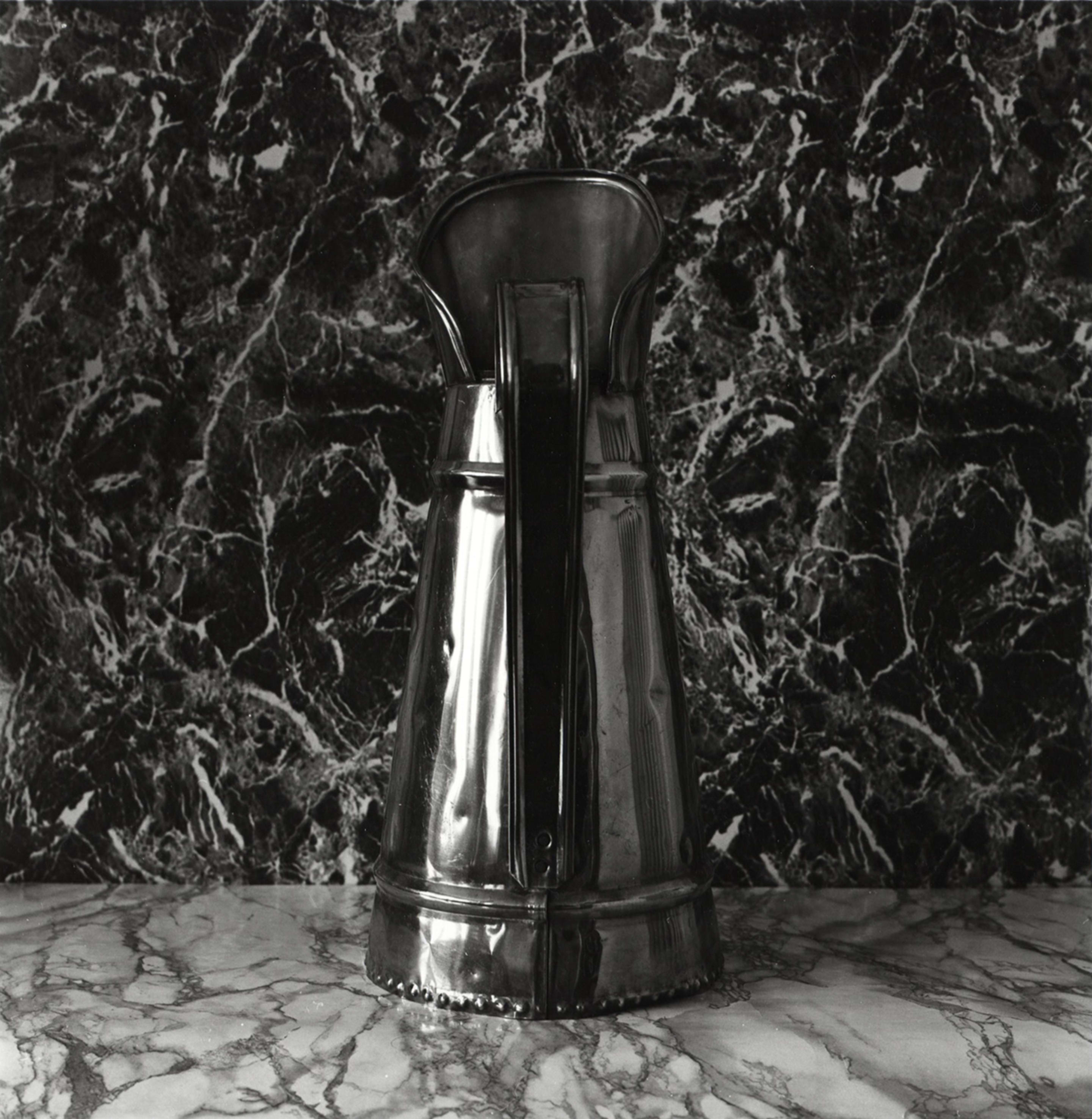
Gelatin silver print
25,4 × 25,1 cm; 32 × 42 × 4 cm framed

Gelatin silver print
27,5 cm diameter; 31,6 × 41,6 × 4 cm framed
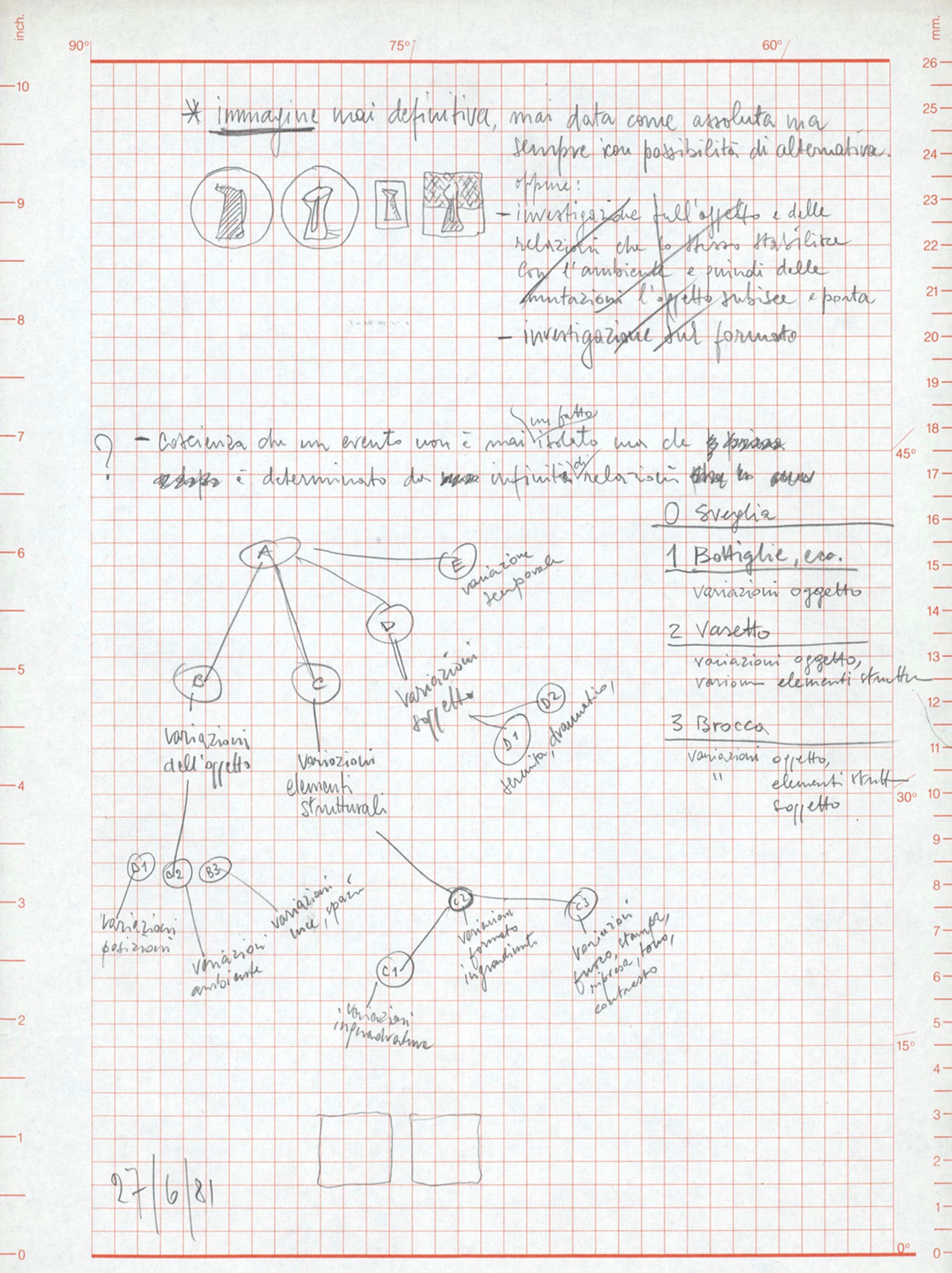
In this handwritten note dated June 27, 1981, Vimercati reflects on works from several years of photographic practice, tracing a sort of genealogy through which slight variations between different versions of the same object (such as 1975’s Bottiglie) pave the way for the variations in format, framing, composition, and background seen in the Brocca (1980/81) series. “Never definitive image, never given as absolute yet always open to the possibility of an alternative.”
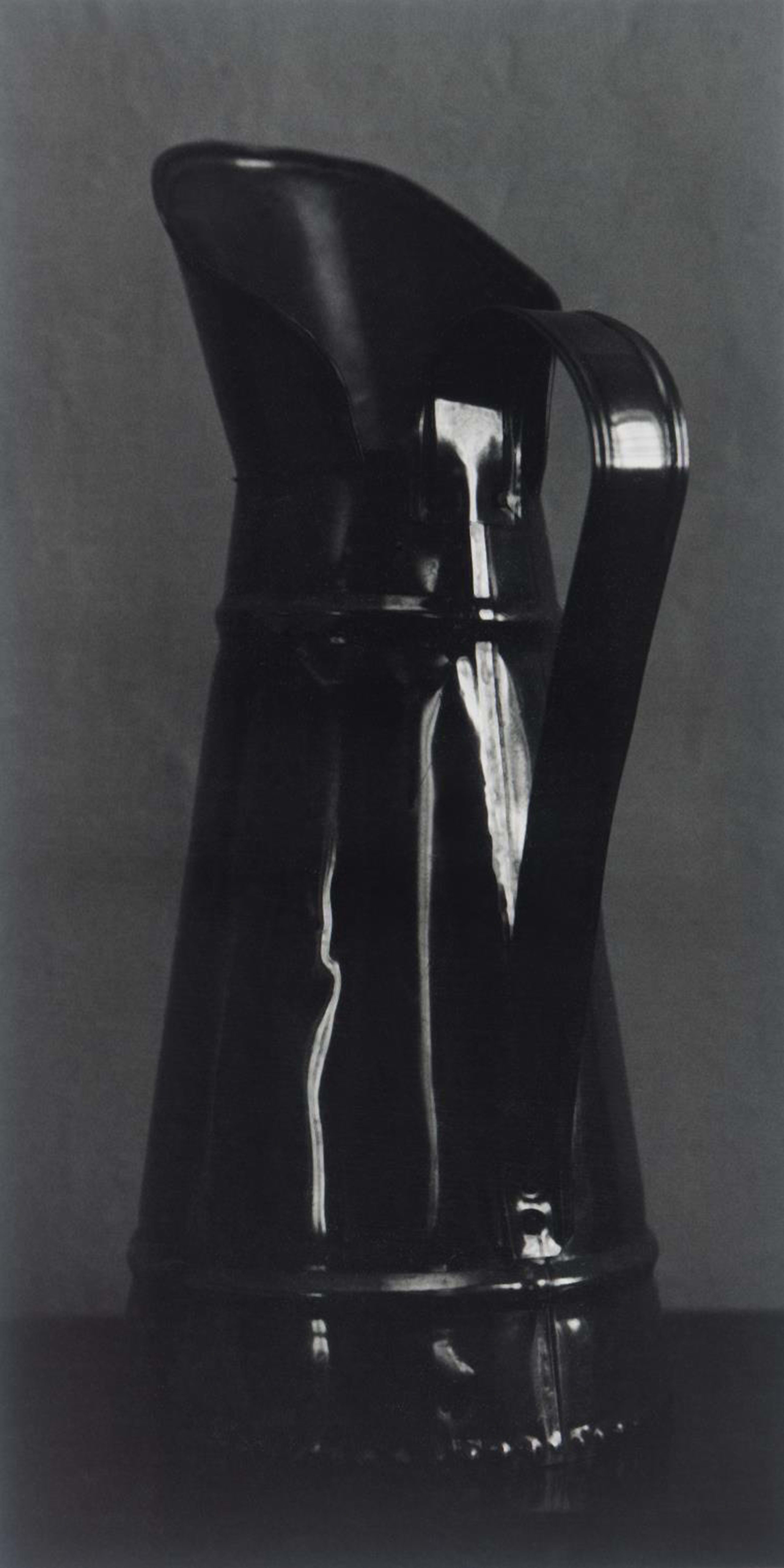
Gelatin silver print
19,4 × 9,9 cm; 32,3 × 25,5 × 4 cm framed
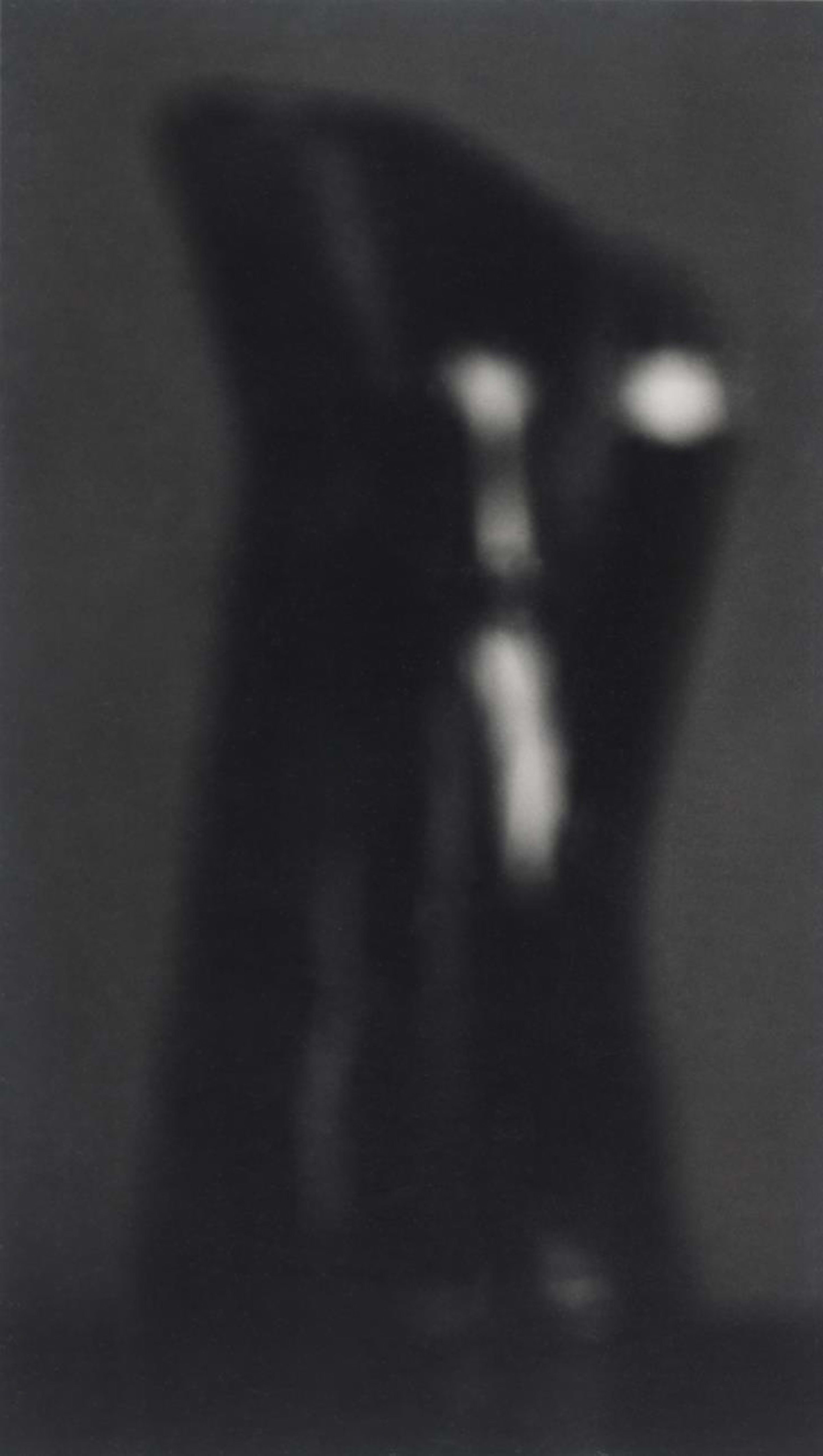
Gelatin silver print
16,5 × 9,3 cm; 32,3 × 25,5 × 4 cm framed
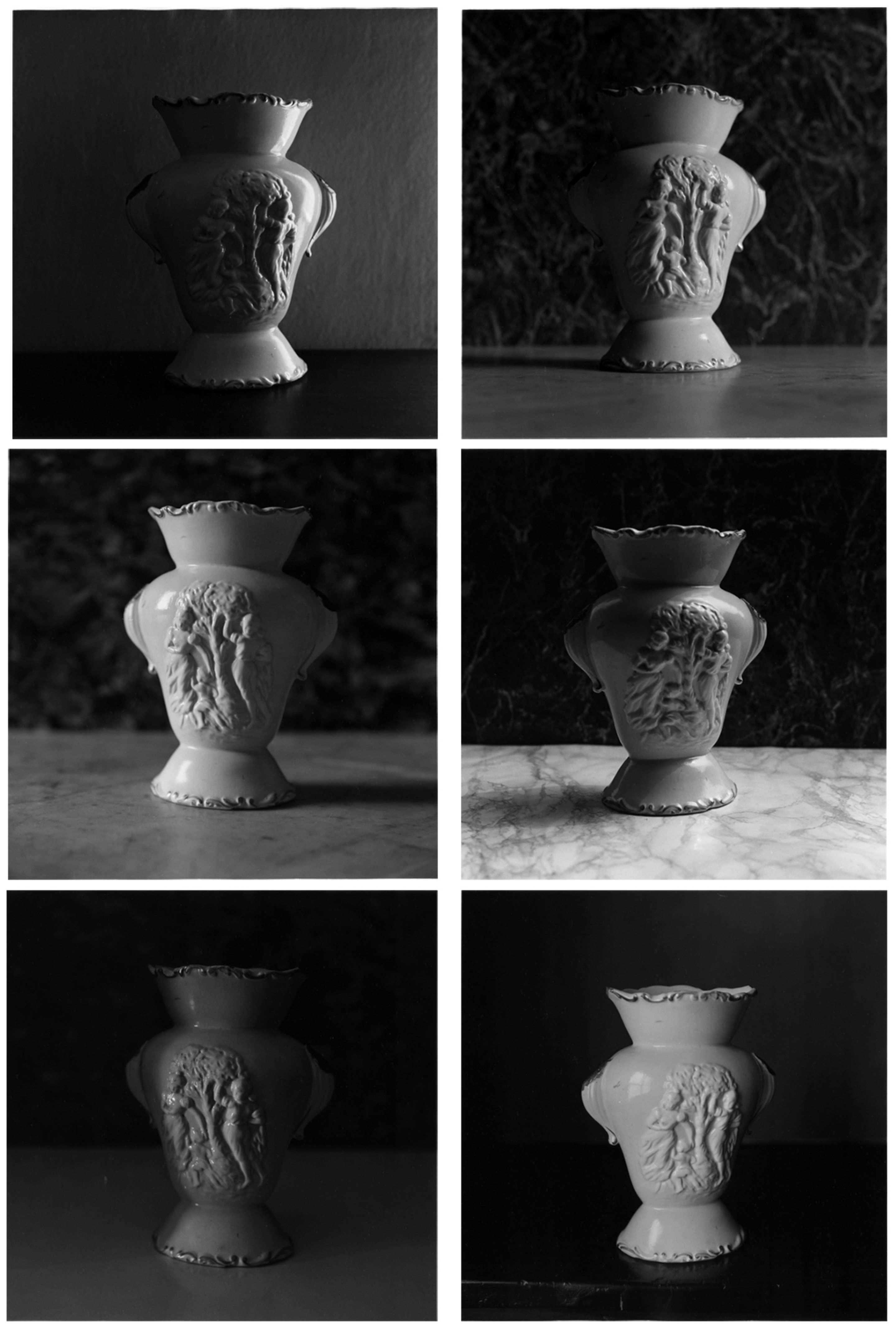
Series of 6 photographs, gelatin silver prints
26 × 26 cm; 48 × 42,7 × 3 cm framed each
Rediscovering a simple, direct style like the ones of Talbot or Atget. Photography already contains in itself all of the elements capable of producing wonder. There’s no need for further technical or linguistic elaborations. These become overlays that obscure the charm of ‘making photographs’, or rather ‘photo-graphing’.
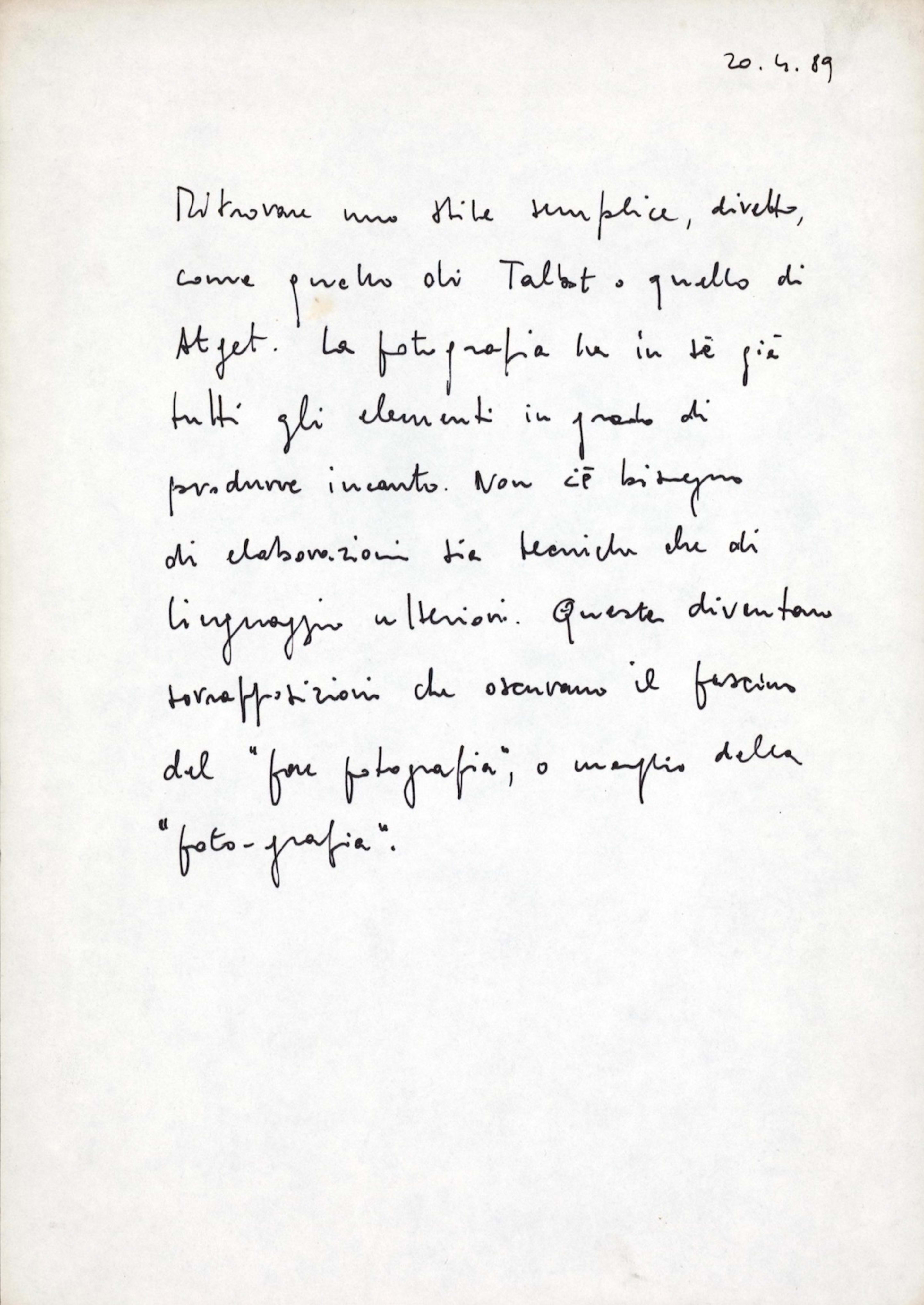
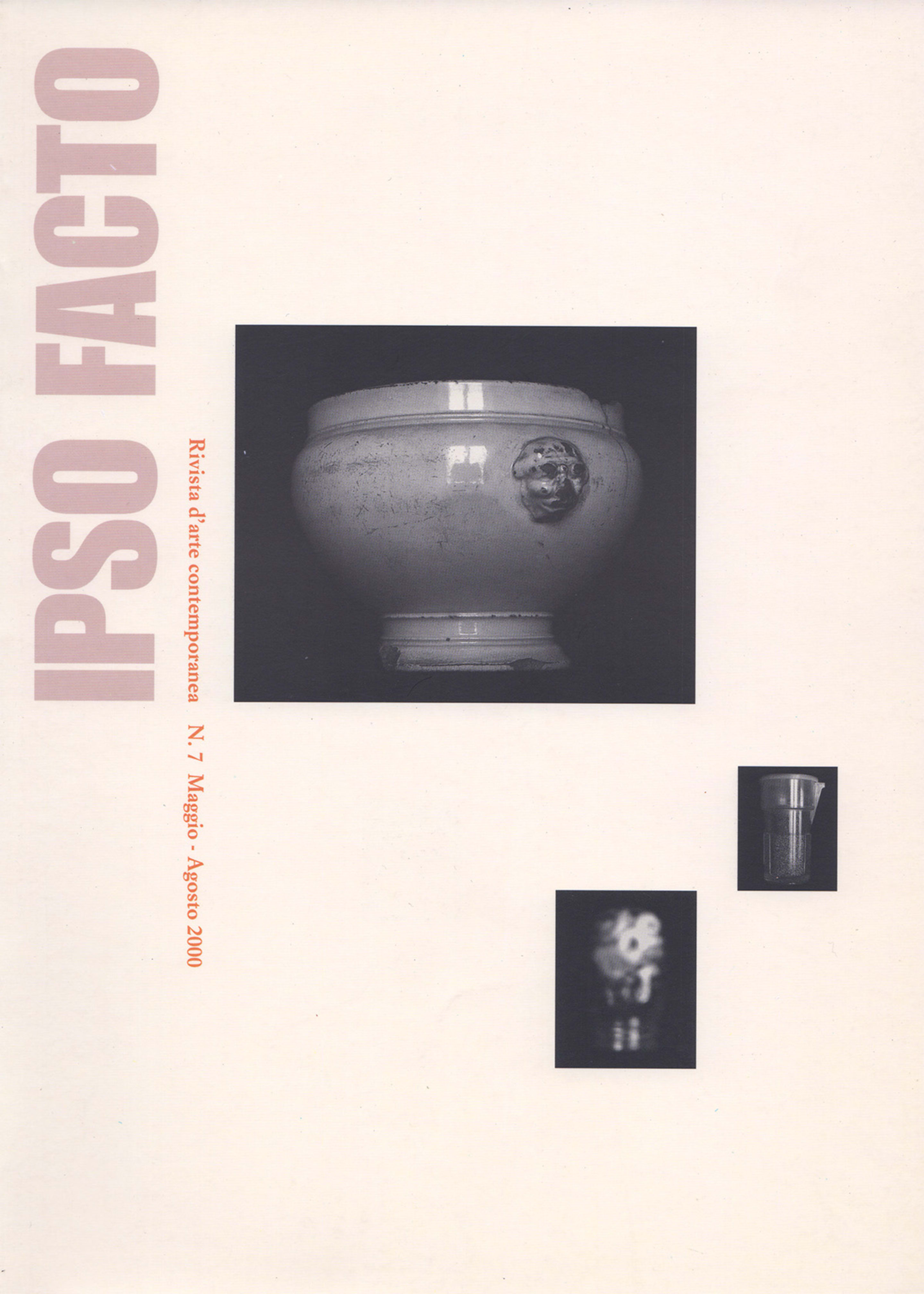
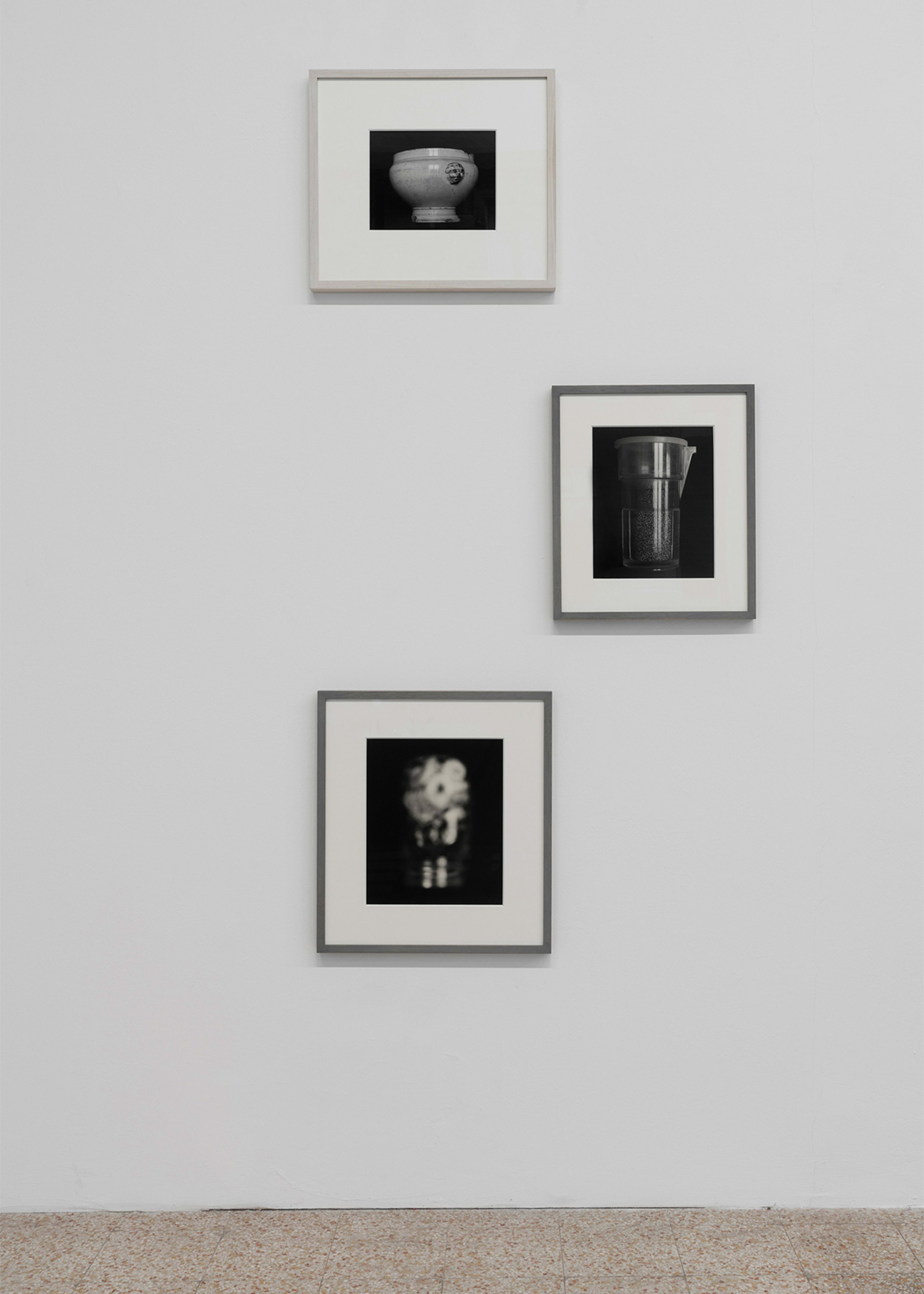
Works from Franco Vimercati’s Soup Toureen and Upside-Downs series are presented in two groupings that mirror the layouts Vimercati himself designed for the 7th issue of Ipso Facto, a contemporary art magazine directed by Elio Grazioli, in the year 2000.
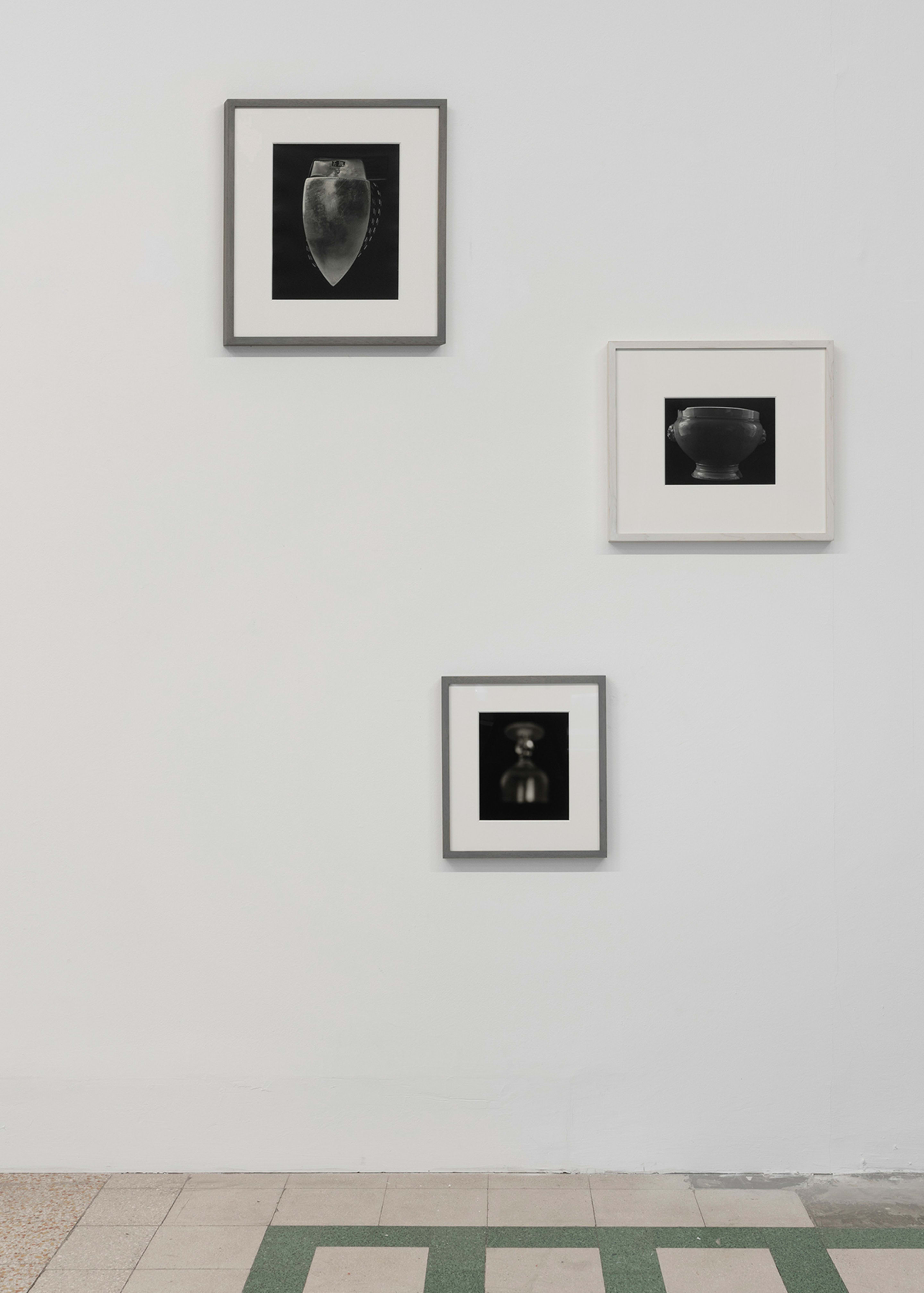
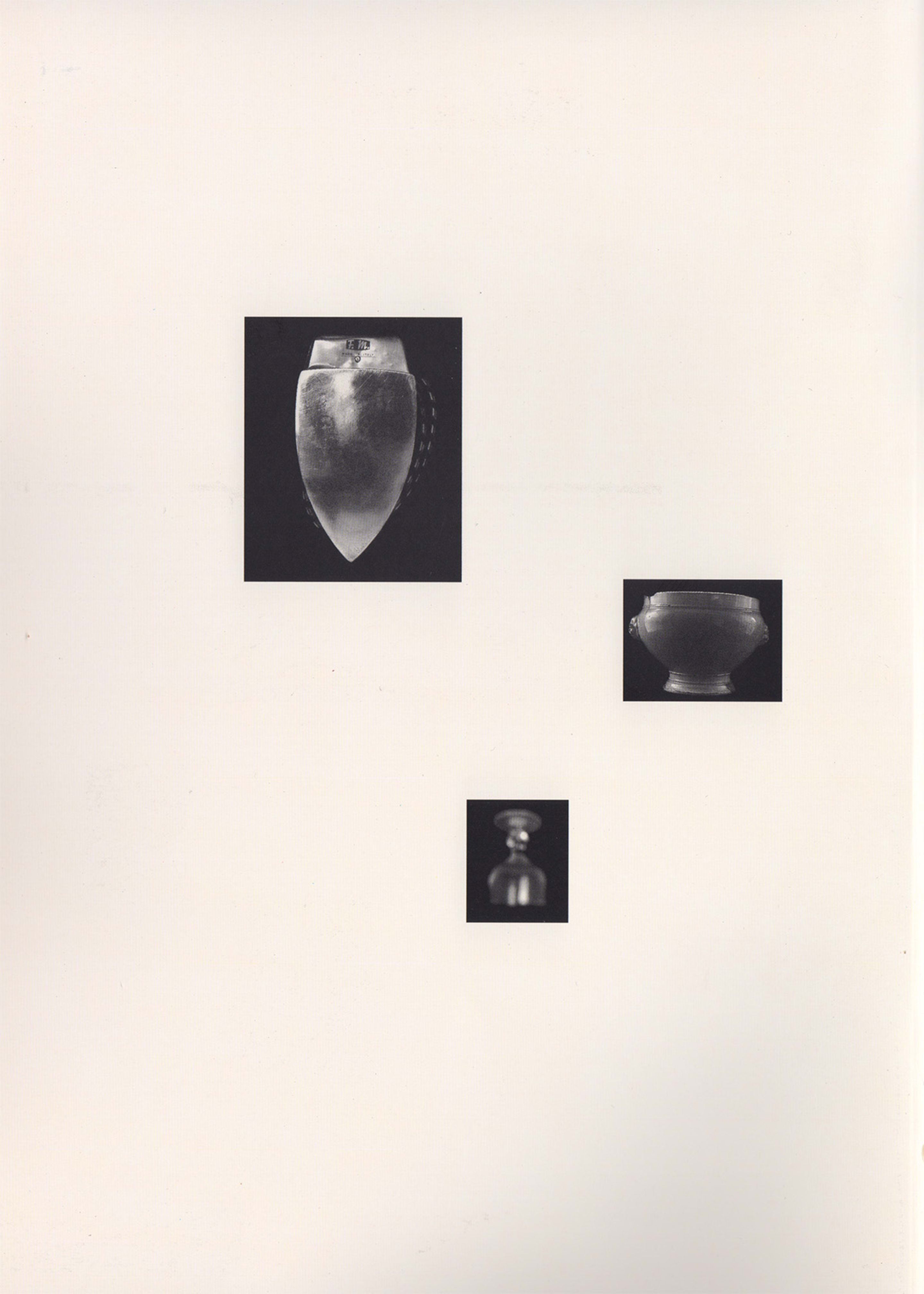
They’re upside down because that’s photography; the object is projected onto the plate upside down, and therefore turning it right-side-up in order to make it intelligible didn’t interest me. What interested me was that photography would take place, the occurrence of the photographic event, not the ability to “read” the object. On one hand, this took away the possibility of reading the object; it is no longer decipherable as a glass, but as a shape. On the other hand, I was no longer part of it, I stayed neutral; photography is one thing, and I am another. Very objective... all my work is very objective. I use the language as it is. When it’s out of focus, that’s the way it is. It’s not as though I’m inventing the out-of-focus. I use, I extract... I haven’t invented a thing. My usage is specific. I extract that particular aspect of the language.
Franco Vimercati, in Elio Grazioli, A Conversation with Franco Vimercati, Milan, 2000. Excerpt from Franco Vimercati: Works, exhibition catalogue (Venice, Palazzo Fortuny) (London: John Eskenazi Publications, 2012). Now in M. Scotini, Op. cit.
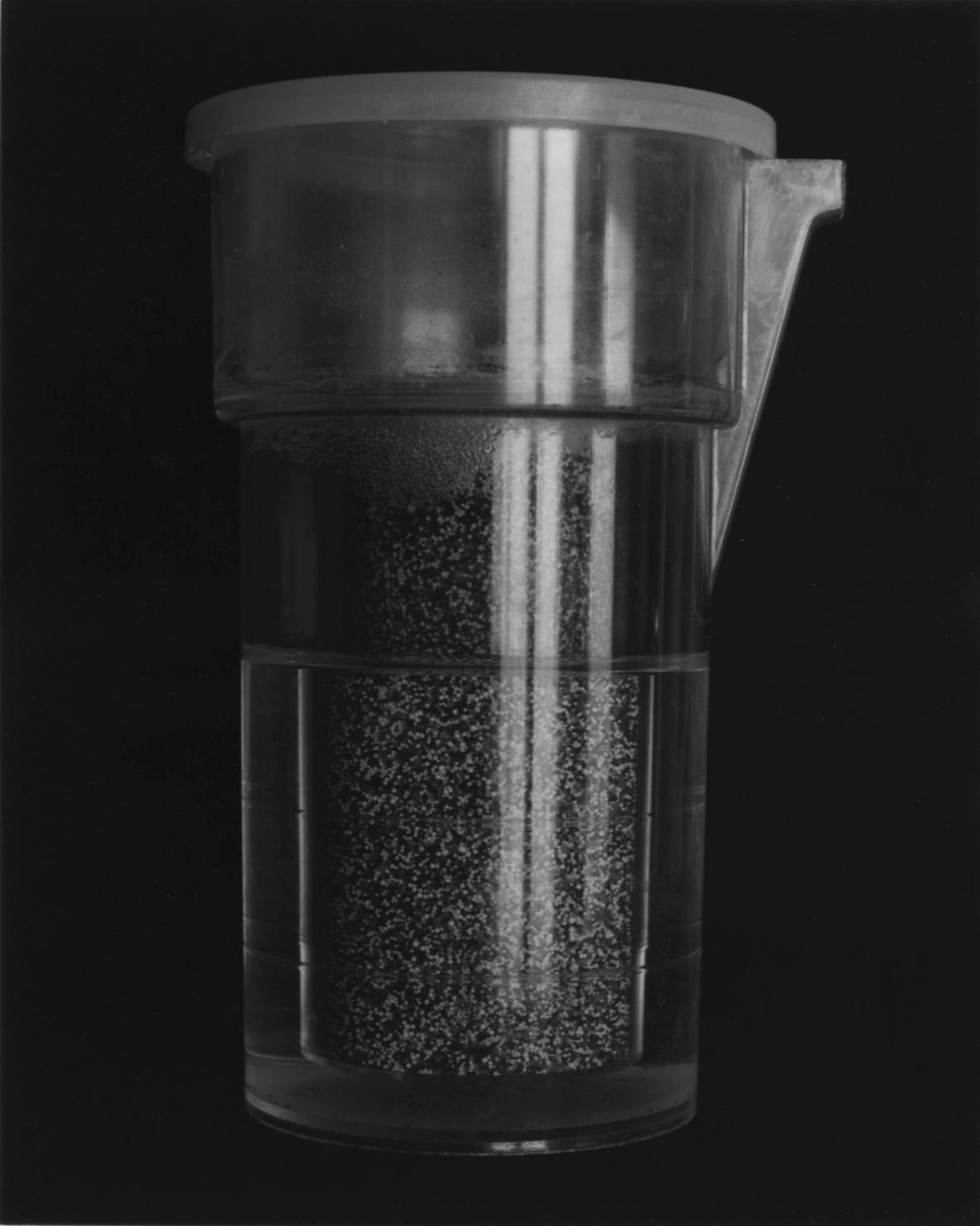
Gelatin silver print
28,2 × 22,5 cm; 43 × 37 × 3 cm framed
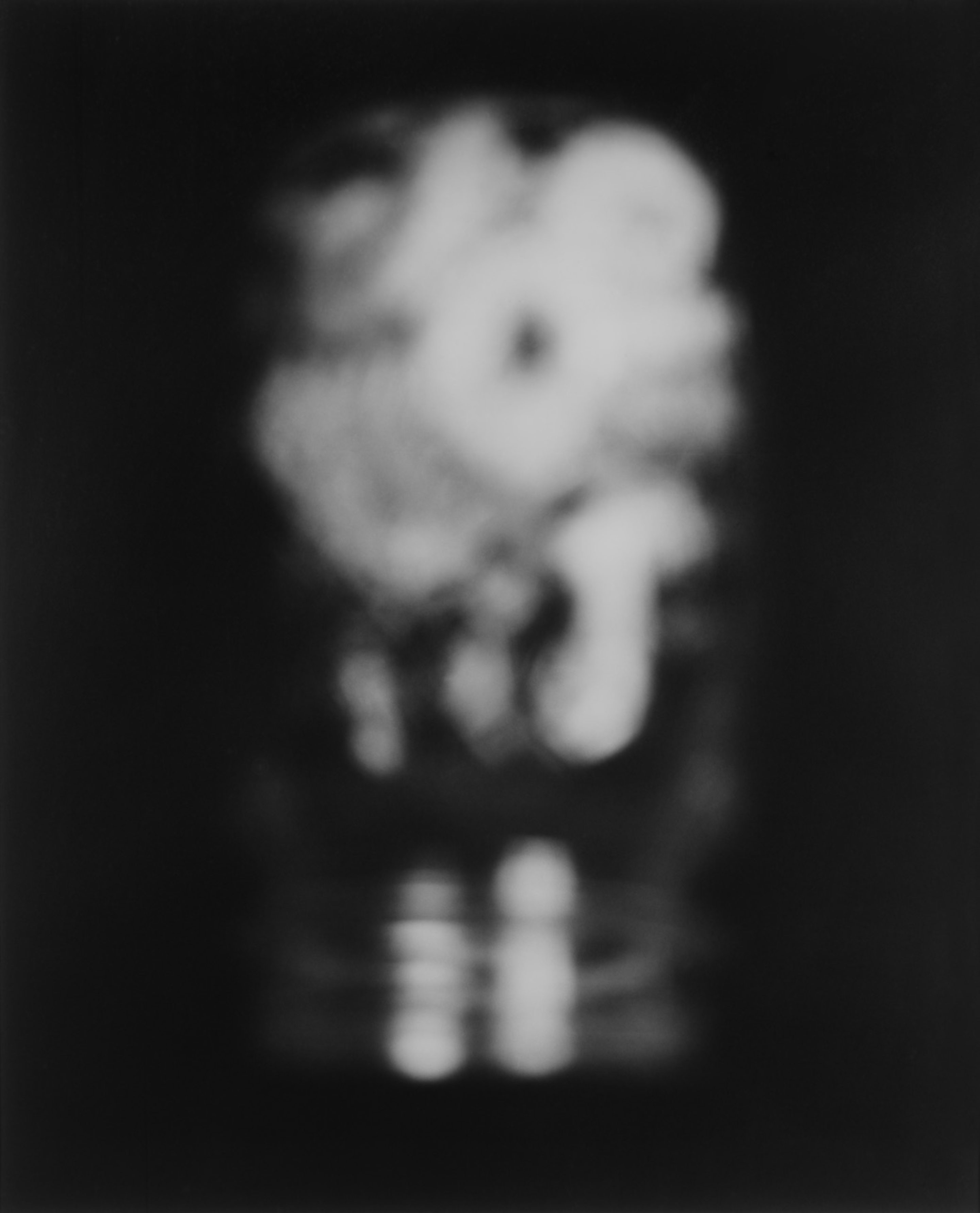
Gelatin silver print
31 × 25,5 cm; 48 × 43,3 × 3 cm framed
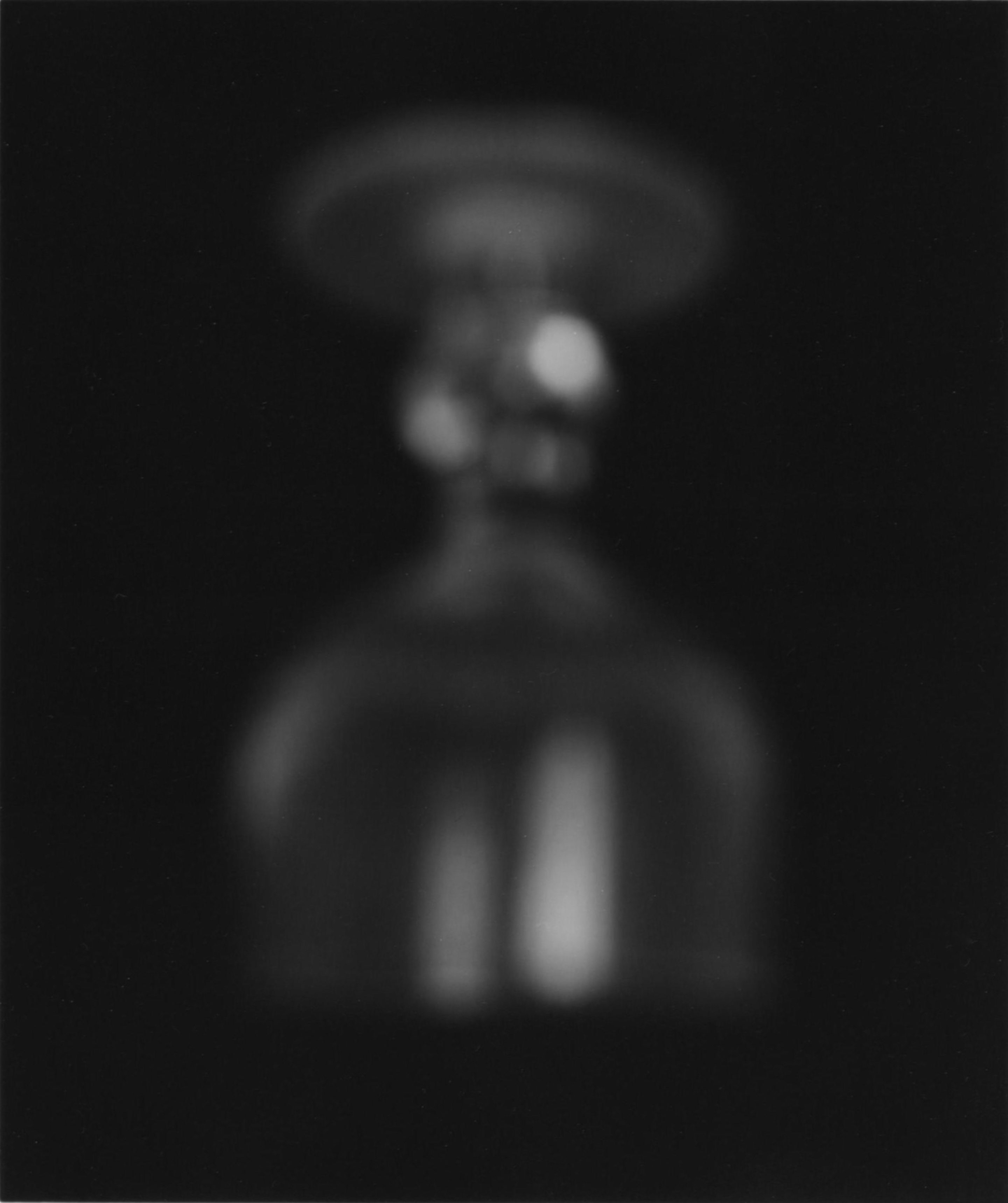
Gelatin silver print
21,8 × 18,3 cm; 36,5 × 33 × 3 cm framed
From 1983 onwards, absolute silence reigns in Vimercati’s photographs. Captured in mineral immobility, the object at the centre of the image seems to exclude even the possibility that sound might exist. Sometimes a shiny surface offers a glimpse of the surrounding environment: a window reflected in the soup tureen, the view of the buildings through the window in a glass. But that impression of the world doesn’t allow any movement or bustle to filter into the frame. Even the multiple exposures of 1999, in which several images of the same object – a glass – are overlapped for a “blurred” effect, are no exception to the rule. The glass that seems to vibrate before our very eyes is like the alarm clock beneath the glass bell jar in a popular physics experiment: the sound does not travel because the air has been sucked out from the bell jar. We see the frenetic movement of the hammer, but nothing encroaches on the silence.
Simone Menegoi, Photographing photography. Four reflections on Franco Vimercati, Brochure published on the occasion of the exhibition Franco Vimercati (Milan, Galleria Raffaella Cortese, 2016). Now in M. Scotini, Op. cit.
On the occasion of the exhibition Galleria Raffaella Cortese and Archivio Franco Vimercati published the book Franco Vimercati. Un minuto di fotografia [Franco Vimercati. One minute of photography] with Quodlibet. The volume, edited by Marco Scotini, includes texts by Paolo Fossati, Luigi Ghirri, Elio Grazioli, Javier Hontoria, Angela Madesani, and Simone Menegoi. Click here for more information about the book.
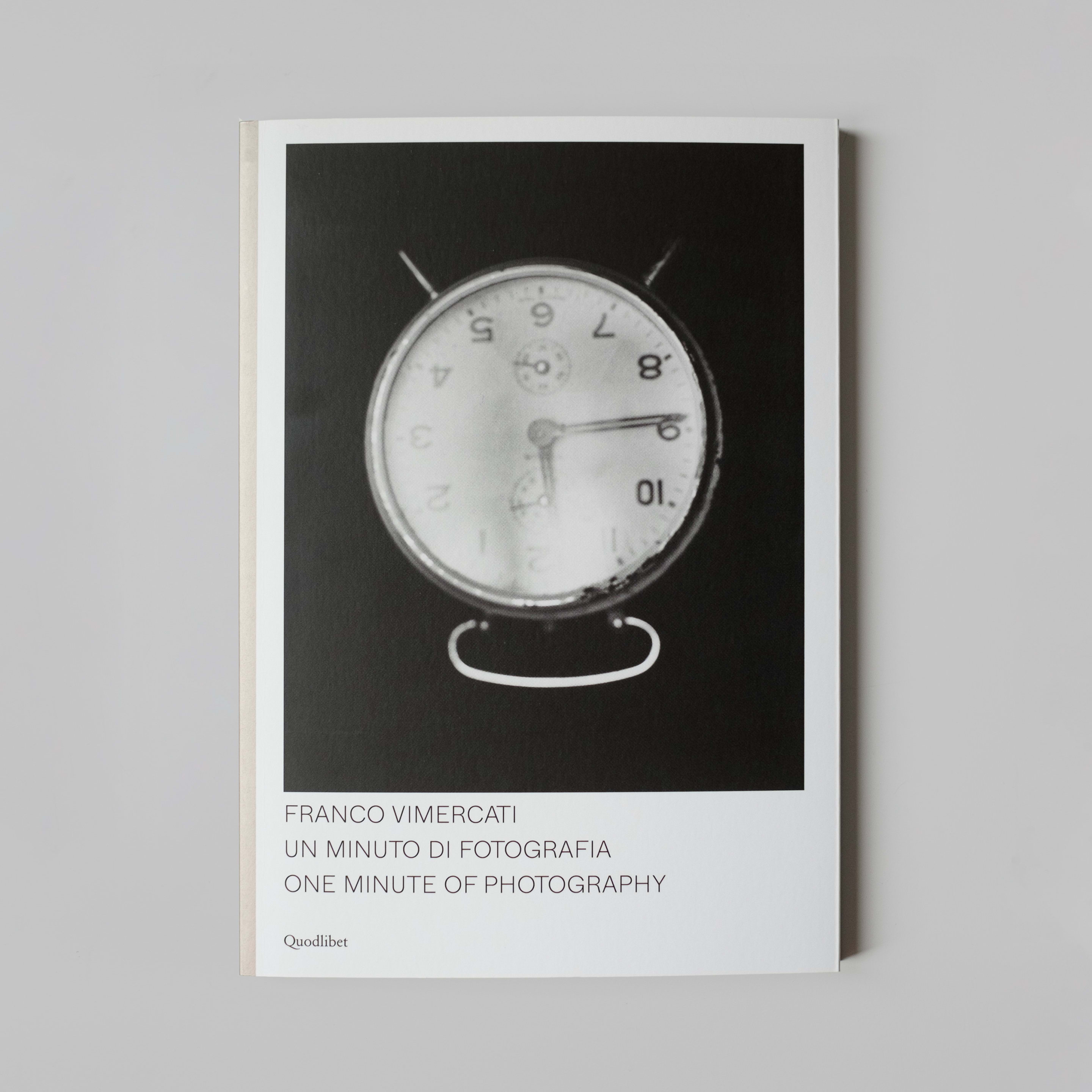
Edited by Marco Scotini
Published by Quodlibet
